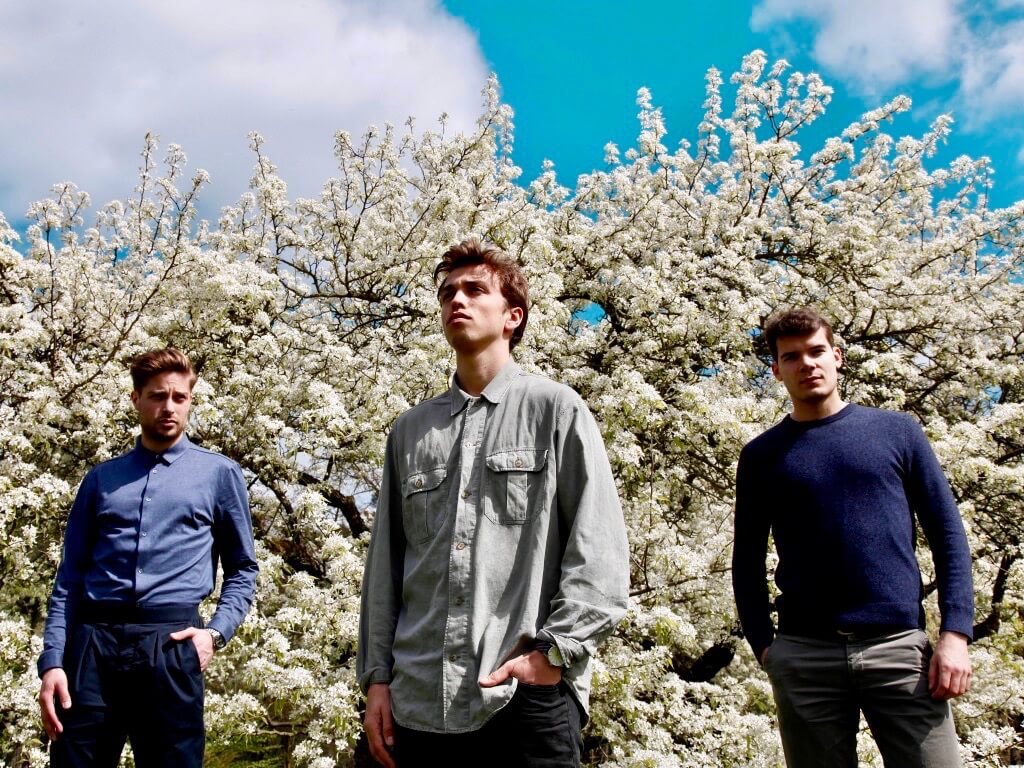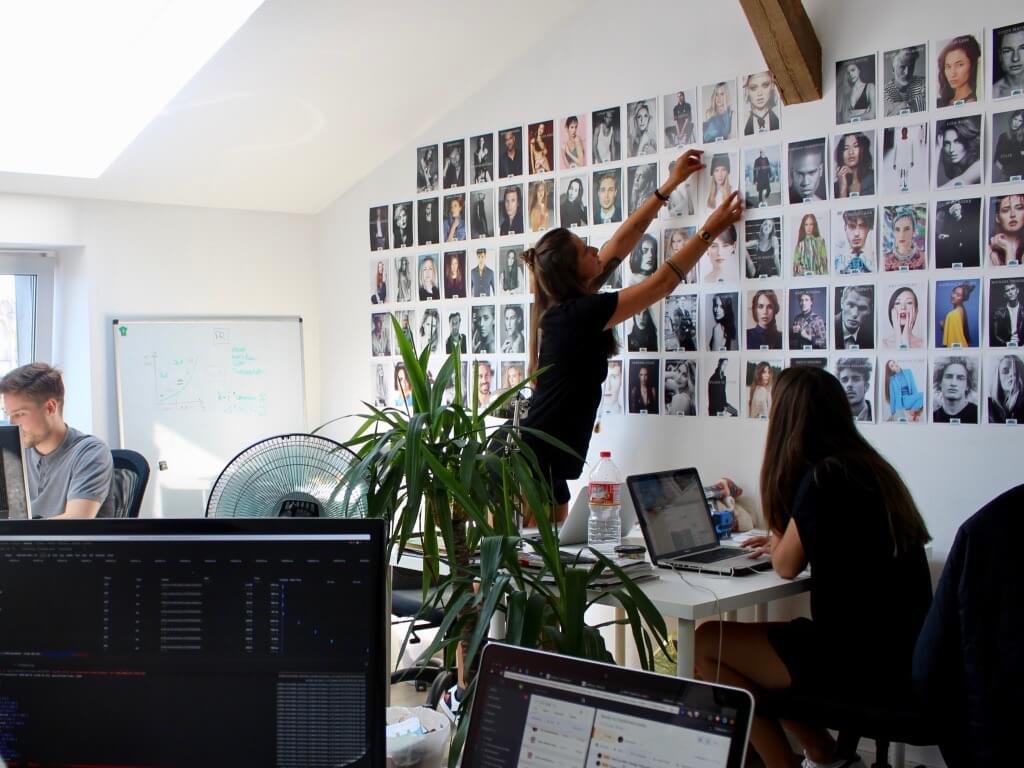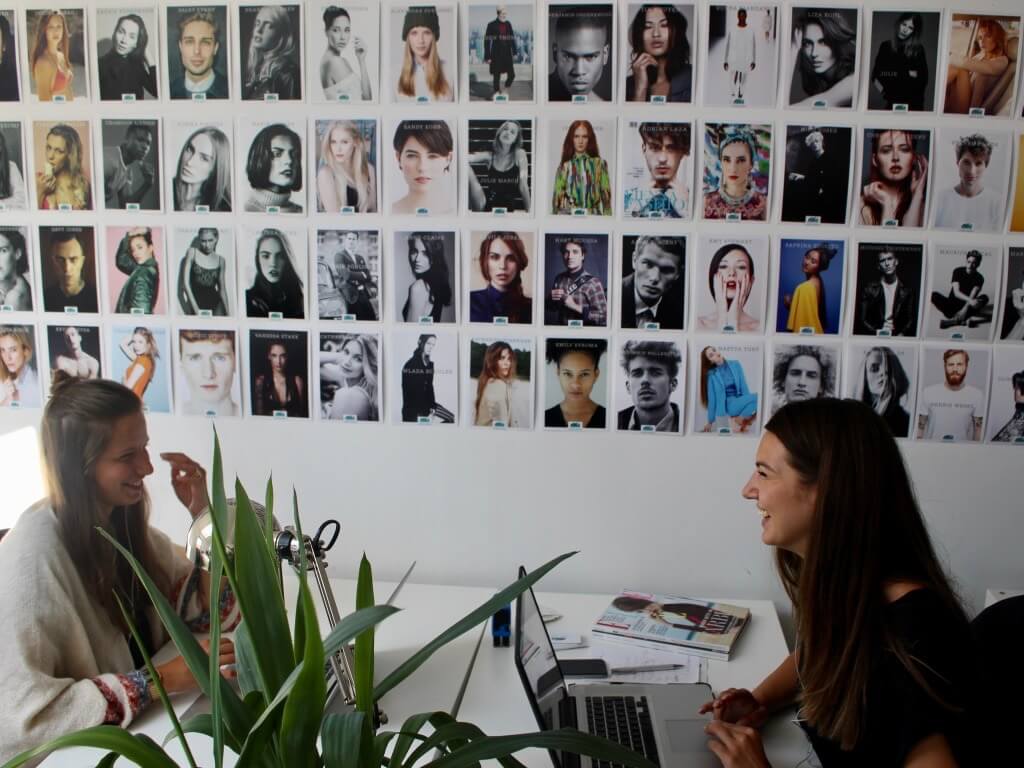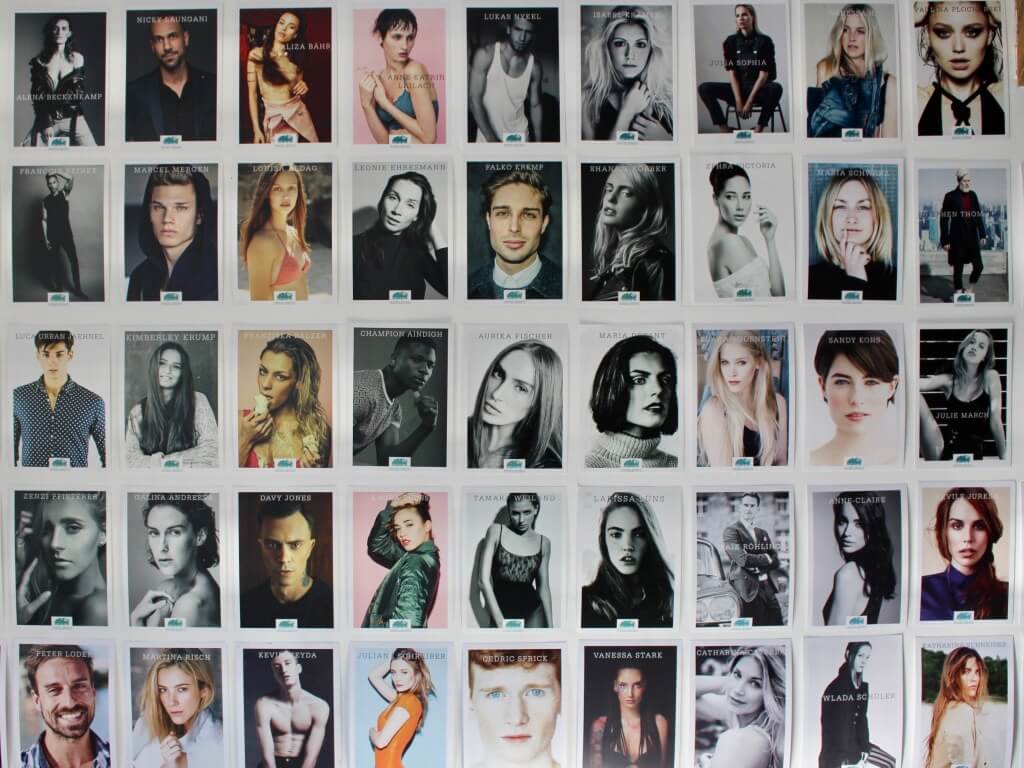In times when the Internet and digital space surround our daily lives, it’s hard to think of industries that were not digitized. One that seems to have been left out is that of modelling agencies. Between phone calls and PDF files, model agencies are of course online, but lack in technical developments. The bright founders of Inselberg decided to revolutionize this and offer an innovative way of booking models. Falko Kremp, Matias Enghild and Niko Andréewitch took Tom and Nerys from Superior Magazine through their brand new platform, its concept, how it works and how models and creatives will benefit from it.

Could you describe Inselberg in one sentence?
Falko: Inselberg is the way for designers, photographers, stylists, casting directors to find and book models in the 21st century.
“Inselberg” could sound strange for a model agency. What is the story behind the name?
Niko: Inselberg, a word that exists both in English and in German, stands for a mountain that comes out of plain. We liked this analogy a lot because we think a model should stand out from the rest – beside the very beautiful sound of “inselberg”, this is the story behind the name.
Before we talk more about your company, could you please tell us a little bit about your background and where you come from?
Matias: I come from Denmark, where I did my bachelor in economics specialised in econometrics. I have always been about making data-driven decisions and turning data into value for users. We met in Madrid, where we did our masters in management and specialised in digital business. I think we all wanted to become entrepreneurs and we thought that we would jump right into it, sooner rather than later.
Falko: I bring the industry expertise in. When I came to Berlin in 2010, I studied communication and social economic context at the University of the Arts. Besides studying, I also modelled with several model agencies from Berlin. When we came up with the idea I remembered things I did not like so much and we investigated in this direction for our business. After my studies I worked at Rocket Internet and learnt there how to build a company and start-ups. I also worked as a communication manager for Glossybox, which is a subscription model in the fields of beauty and lifestyle.
Niko: I’m from Vienna, where I studied business administration at WU, the University of Economics and Business Administration. I specialised in entrepreneurship and finance; I was always intrigued in these two fields. I then went into finance: I did 2 years at KPMG restructuring and auditing and found out that finance can be fun. But at some point you want to move on, so it was the perfect opportunity for me to go to Madrid and start a new chapter. I always had this entrepreneurial spirit, I founded my first start-up when I was 15, in Iowa on an exchange: I gave tennis lessons and built a small tennis school there. I also created a non-profit start-up in Vienna, where we bring students and young professionals together, with interesting perspectives from science, business, and we organise events.
You started some months ago. When and where was your company launched?
Falko: We opened for the model side for Berlin Fashion Week in January 2016 and the for the customer side in April. The official launch was in May, at first for Germany and Austria, but we plan to internationalise quickly. The big markets in Europe are of course London, Paris and Milan. Because modelling is by nature a very international market, we as a company want to reflect that and internationalise as quickly as possible.
What is the concept behind Inselberg and how does it make your company different from other “traditional” model agencies? Why does the model business need this new type of agency?
Falko: Modelling is one of the last industries that did not really get digitized yet. In each urban centre you have a lot of modelling agencies. In Berlin alone, you might have 10-20 model agencies, all taking a little part of the market, which is very inefficient for customers because they need to go to more than one agency in order to get the exact model they would like to have. Especially if you’re looking for a certain type of model, it’s really hard for you to find the right one because you have to consult several agencies. On our platform we aggregate models to make it easy for our customers to find the perfect.
Matias: When we started validating the idea back at IE Business School, after talking to clients and models for the whole year, it was very clear that all the clients said “the communication is inefficient with all the emails, PDFs, phone calls back and forth”. We started thinking a little bit deeper into this and came to the conclusion that when you’re a photographer or a creative professional, you have an idea of a shoot or a commercial. It’s always up in your head, you have this picture of how it’s supposed to look like, and of course how the model is supposed to look like. To actually get this model, you have to translate this visual idea into words, either over the phone or you have to write it down in an email.
Basically, what we want to do is to facilitate the process. You search models with your eyes instead of explaining your ideas with your mouth. What does this visual search mean? It means that you go on our platform, you see a model that you like, maybe not perfect but if the model is the closest to the one you envisioned then you merely click on this model and get five, six, seven models that look like this model. Then in maybe four clicks, you land on the perfect model’s profile, instead of writing a ton of emails and having a ton of phone calls. Our aim is to find the perfect model in ten minutes – it shouldn’t take more.

Is there any other company that is doing something similar to you?
Falko: We are the only ones that are facilitating the whole booking process from the initial search for a model to the final booking. We allow for desktop as well as mobile usage. And I guess this is what makes us pretty unique.
And how do “traditional” agencies see you as a competitor? What were the first reactions?
Falko: Many agencies understand that we can be very complementary, this was implied when I referred to top models and new faces. We are already talking to some of the biggest agencies in Germany to think of different collaborations possible. Be it an interesting model that we have, or models on their platforms that do not get booked enough. We are growing the market so we can push models that don’t get enough exposure at their agencies in the very moment. Why not work together here and benefit. For agencies it’s just more revenues.
Matias: We are actually getting the best feedback from clients who are already aware of models being their own brand and hence push their models to be active on Instagram. Using all these different platforms can bring traffic to themselves and to their agency.
Which models would you like to attract?
Falko: It is important to say that there is a need for agencies when it comes to two kinds of models. One is top models, if you think of Cara Delevingne or Kate Moss; they need management because they have a lot of offers. Top models are not the ones we are building our offer for. The same goes for new faces, models that just got scouted off the streets. They are fourteen, fifteen and need some management, they need to build their book. For these, we are not necessarily helpful.
Where we see ourselves is the mid-segment. We think there are a lot of models that don’t get enough jobs, not as many jobs as they could get in the mid-segment. What does mid-segment mean? Models that have a book already, have experience, either internationally or nationally, but they are not pushed by the agencies anymore. They are not the new face of the agency anymore, hence the bookers have newer models they want to push, and there are relationship bonds that bookers have with some models but not with others. If you have four bookers in an agency, they can’t take care of hundreds of models. Those models who are not getting enough jobs, who are not taken enough care of, but that have books and are old enough to manage their own careers; those are the models we’re offering a lot of value to.
Matias: I think what we’re trying to tap into is what you see on e.g. Instagram, you see numerous models managing themselves, whether promoting shoes or mentioning brands in their posts. What they actually do is managing their careers online. Young people are just hyper independent right now. They understand new media, they know how to become a brand. Agencies cater to the classic fashion scene, and what we could add to this classic fashion scene is what is happening right now, that a lot of brands actually want to find a type of influencer that fits them. And it is maybe not the classic beauty but whoever fits well with them.
Niko: This is why we actually broaden the term of model. A lot of people, especially not from the industry, think of the “model” as the fashion model, that’s 1,78-1,84m, that is blonde, very skinny and dresses as 34. We think “model” very broad, we think model like a face that fits the brand. It just has to be somebody with an attitude – the right kind of attitude.
Falko: The amazing thing is, we as a platform, with 0 marginal cost, can have all these different kinds as long as we make sure that we put them in the right basket, so that when a client searches they find their type. If this works, we can be endless in the numbers and variety we have on the platform, it’s something a model agency could never have, as they have this relationship where 2 bookers maybe manage 200 models. We are much more flexible with this.

When people would like to become a model at Inselberg. What’s different or similar to the “traditional” recruiting process?
Falko: We are very open in the first steps. It is always a little odd to say but I guess we are democratising modelling, because theoretically it’s open, everybody can apply to be a model. In a second step, nevertheless, we have industry experts that look at every application and try to put the models in the right basket. This means, we have a ranking and category system. If we have a fashion model, she could apply to be a fashion model, a commercial model and a promotion model on the platform. Further, we would assign a ranking on how much the profile is filled and how strong the portfolio is. The first one is pretty easy, it’s technology: the platform says “she has filled out her portfolio with 10 pictures” and for this she would get two crowns for example. Second step is manual, we have industry experts who already worked at big modelling agencies, we have designers looking over it as well and based on their assessments we assign crowns. If you get three crowns from us, you will be found in all search queries; fashion modelling, commercial modelling and promotion modelling. If you get two, you will only be visible in commercial modelling and so on.
In the mid-term we want to add a new element, which would be letting the clients decide if a model is good enough. Written feedback should also be taken into account to build up the ranking of a model. Whenever you perform a job well, this converts into a better ranking. We give back the power to the actual two players, which are the model and the client.
In case I am a client and would like to book one of your models, do I have to register at your platform? Is there also a selection process?
Niko: It’s very easy, you sign up and you can start searching models from the very beginning but before you can send a booking request, we need to validate your account. We check that you are a client that brings quality to our platform. If you’re just looking for good-looking guys or good-looking girls for a bachelor party, then it’s obviously a clear no go. You need to be an industry professional to be on the platform.
Who shall be your customers? For whom would Inselberg be the ideal partner?
Matias: We’re really interested in photographers as first clients, because there’s a lower complexity. Right now, we’re still young, we’re still new and we want to create the perfect booking flow. Often they work alone, so they have a client, they find the model, book the model and they do the actual shooting. From talking to them and getting feedback – customer service – they are the simplest kind to cater to.
But we’re also talking with more industrial clients like advertising agencies, photo production companies or e-commerce stores. In the long-term, our platform would actually be the place where all the stakeholders should be able to communicate over which model to book.
Is there any other company that is doing something similar to you?
Falko: We are the only ones that are facilitating the whole booking process from the initial search for a model to the final booking. We allow for desktop as well as mobile usage. And I guess this is what makes us pretty unique.
How would you like to expand your business?
Niko: Beside the international expansion we also think of integrating other verticals, why not also adding other players when it comes to professionals: photographers, hair and makeup artists, stylists, etc. You as a creative could book all the different players for a shooting from one platform.
Matias: Further, we want to expand our initial search. We are working on a solution using image recognition. If you find a model on our platform and you think “I like her/him, but it’s not exactly what I want” then you can ask the platform to provide more models similar to the one you found and we provide the same type times 10 with small differences. This is really going to change the way we search for models. Visual search tools are the next step.
Thank you for the interview!

